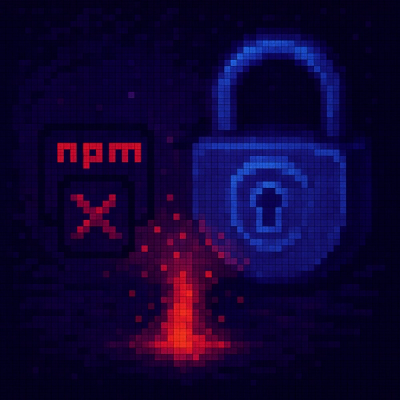vfs







Package vfs provides a pluggable, extensible, and opinionated set of filesystem
functionality for Go across a number of filesystem types such as os, S3, and GCS.
Philosophy
When building our platform, initially we wrote a library that was something to
the effect of
if config.DISK == "S3" {
// do some s3 filesystem operation
} else if config.DISK == "mock" {
// fake something
} else {
// do some native os.xxx operation
}
Not only was ugly but because the behaviors of each "filesystem" were
different and we had to constantly alter the file locations and pass a bucket
string (even if the fs didn't know what a bucket was).
We found a handful of third-party libraries that were interesting but none of
them had everything we needed/wanted. Of particular inspiration was
https://github.com/spf13/afero in its composition of the super-powerful stdlib
io.* interfaces. Unfortunately, it didn't support Google Cloud Storage and there
was still a lot of passing around of strings and structs. Few, if any, of the
vfs-like libraries provided interfaces to easily and confidently create new
filesystem backends.
What we needed/wanted was the following(and more):
- self-contained set of structs that could be passed around like a file/dir handle
- the struct would represent an existing or nonexistent file/dir
- provide common (and only common) functionality across all filesystem so that after initialization, we don't care
what the underlying filesystem is and can therefore write our code agnostically/portably
- use io.* interfaces such as io.Reader and io.Writer without needing to call a separate function
- extensibility to easily add other needed filesystems like Microsoft Azure Cloud File Storage or SFTP
- prefer native atomic functions when possible (ie S3 to S3 moving would use the native move api call rather than
copy-delete)
- a uniform way of addressing files regardless of filesystem. This is why we use complete URI's in vfssimple
- fmt.Stringer interface so that the file struct passed to a log message (or other Stringer use) would show the URI
- mockable filesystem
- pluggability so that third-party implementations of our interfaces could be used
Install
Go install:
go get -u github.com/c2fo/vfs/...
Glide installation:
glide install github.com/c2fo/vfs
Usage
We provide vfssimple as basic way of initializing filesystem backends (see each
implementations's docs about authentication). vfssimple pulls in every c2fo/vfs
backend. If you need to reduce the backend requirements (and app memory
footprint) or add a third party backend, you'll need to implement your own
"factory". See backend doc for more info.
You can then use those file systems to initialize locations which you'll be
referencing frequently, or initialize files directly
osFile, err := vfssimple.NewFile("file:///path/to/file.txt")
s3File, err := vfssimple.NewFile("s3://bucket/prefix/file.txt")
osLocation, err := vfssimple.NewLocation("file:///tmp")
s3Location, err := vfssimple.NewLocation("s3://bucket")
osTmpFile, err := osLocation.NewFile("anotherFile.txt") // file at /tmp/anotherFile.txt
With a number of files and locations between s3 and the local file system you
can perform a number of actions without any consideration for the system's api
or implementation details.
osFileExists, err := osFile.Exists() // true, nil
s3FileExists, err := s3File.Exists() // false, nil
err = osFile.CopyToFile(s3File) // nil
s3FileExists, err = s3File.Exists() // true, nil
movedOsFile, err := osFile.MoveToLocation(osLocation)
osFileExists, err = osFile.Exists() // false, nil (move actions delete the original file)
movedOsFileExists, err := movedOsFile.Exists() // true, nil
s3FileUri := s3File.URI() // s3://bucket/prefix/file.txt
s3FileName := s3File.Name() // file.txt
s3FilePath := s3File.Path() // /prefix/file.txt
Third-party Backends
Feel free to send a pull request if you want to add your backend to the list.
See also:
Ideas
Things to add:
- Add SFTP backend
- Add Azure storage backend
- Add in-memory backend
- Provide better List() functionality with more abstracted filtering and paging (iterator?) Return File structs vs URIs?
- Add better/any context.Context() support for deadline and cancellation
Contributors
Brought to you by the Enterprise Pipeline team at C2FO:
John Judd - john.judd@c2fo.com
Jason Coble - @jasonkcoble - jason@c2fo.com
Chris Roush – chris.roush@c2fo.com
https://github.com/c2fo/
Contributing
- Fork it (https://github.com/c2fo/vfs/fork)
- Create your feature branch (
git checkout -b feature/fooBar)
- Commit your changes (
git commit -am 'Add some fooBar')
- Push to the branch (
git push origin feature/fooBar)
- Create a new Pull Request
License
Distributed under the MIT license. See `http://github.com/c2fo/vfs/License.md
for more information.
Interfaces
type File
type File interface {
io.Closer
io.Reader
io.Seeker
io.Writer
fmt.Stringer
Exists() (bool, error)
Location() Location
CopyToLocation(location Location) (File, error)
CopyToFile(File) error
MoveToLocation(location Location) (File, error)
MoveToFile(File) error
Delete() error
LastModified() (*time.Time, error)
Size() (uint64, error)
Path() string
Name() string
URI() string
}
File represents a file on a filesystem. A File may or may not actually exist on
the filesystem.
type FileSystem
type FileSystem interface {
NewFile(volume string, name string) (File, error)
NewLocation(volume string, path string) (Location, error)
Name() string
Scheme() string
}
FileSystem represents a filesystem with any authentication accounted for.
type Location
type Location interface {
fmt.Stringer
List() ([]string, error)
ListByPrefix(prefix string) ([]string, error)
ListByRegex(regex *regexp.Regexp) ([]string, error)
Volume() string
Path() string
Exists() (bool, error)
NewLocation(relativePath string) (Location, error)
ChangeDir(relativePath string) error
FileSystem() FileSystem
NewFile(fileName string) (File, error)
DeleteFile(fileName string) error
URI() string
}
Location represents a filesystem path which serves as a start point for
directory-like functionality. A location may or may not actually exist on the
filesystem.
type Options
type Options interface{}
Options are structs that contain various options specific to the filesystem






